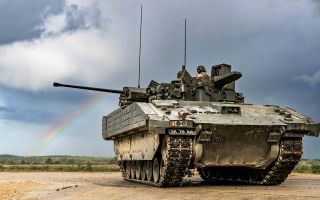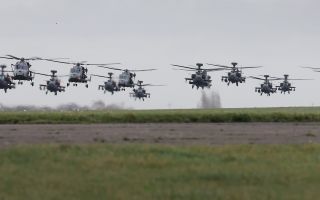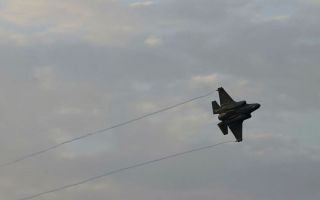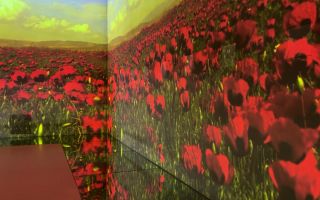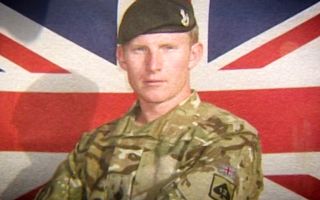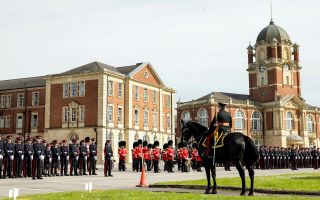The Stories Of Bravery Behind The Tank Regiment's Victoria Crosses
Left to right: Richard Wain, Cecil Sewell, Clement Robertson, Richard West (Picture: Tank Museum).
The four Victoria Crosses awarded to members of the Tank Corps during the First World War are to be put on display alongside one another for the first time.
The Tank Museum in Bovington, Dorset, has managed to secure the four medals and has unveiled them today in a special exhibition.
One of the VCs, awarded to Cecil Swell, is owned by the museum.
Lord Ashcroft loaned one awarded to Richard West, and the family of Richard Wain lent his.
Following an appeal, the final VC, awarded to Clement Robertson, has also been secured.
The VC was and remains the highest award for gallantry, and the stories of each individual’s bravery are staggering.
Sadly, all four VCs were awarded posthumously.

Prior to an advance, he spent three days in no-man’s-land marking out the routes for his tanks to follow – all under heavy fire.
Despite the routes being mapped out, Robertson was concerned that the tanks might lose their way and get bogged down.
Astonishingly, he decided to lead them on foot, refusing to take cover from the shell and bullet fire.
As the tanks continued forward, the 26-year-old was shot and killed, but his self-sacrifice led to a successful attack.
During the battle, he was seriously injured when his tank was hit, but he shunned a stretcher, climbed out with a Lewis gun and attacked the enemy. He captured a strong point, took prisoners and allowed the infantry to advance.
Capt Wain then continued shooting at the retreating Germans until he received a fatal shot to the head. He was just 20.
After seeing one of his fellow Whippet tanks fall into a shell-hole and catch fire, he leapt from his own tank and dug away the mud so the men could escape.
He then saw that his own tank driver Gunner Knox was wounded and he rushed to help.
As he ran across open ground, the 23-year-old was shot several times. While administering first aid, he was shot again, fatally.
One report stated that when their bodies were found, Sewell was slumped over Knox’s body as if he were protecting him.
The first was leading men to their objective after having two horses shot from beneath him.
The second was on 2 September when, as a Lieutenant Colonel attached to the Tank Corps and in command of the 6th Light Battalion and their Whippet tanks, he feared a retreat from his infantry due to an enemy counter-attack.
Realising the danger, he rode on horseback up and down the line encouraging them to fight and defend their position.
His last words were:
”Stick it, men; show them fight, and for God’s sake put up a good fight.”
According to his citation he then fell ‘riddled with bullets’, but his words and actions inspired the men and the attack was defeated. He was 39.
David Willey, curator of the Tank Museum, said:
“Having all four VCs together a century after they were awarded is a great moment for us. They have never been together before.
“Of course it wouldn’t have been possible without the assistance and generosity of Lord Ashcroft and the families of the recipients.
“As well as the VCs we will be displaying the men’s other medals and descriptions of what they did and photographs of them.
“All of the recipients received their VCs posthumously and the stories of their bravery is humbling and inspirational.
“Tanks were new, they wereonly introduced in September 1916 we can easily forget they were designed tosave British lives.
“While we have the finest collection of tanks in the world it is alwaysthe stories of the men who fought in them that capture the imagination of our audience – and here are four of the best.”
The exhibition runs from Monday 6 August until 11 November.
On Wednesday 8 August, the museum will also be commemorating the centenary of the Battle of Amiens, considered to be the beginning of the end of the war.

